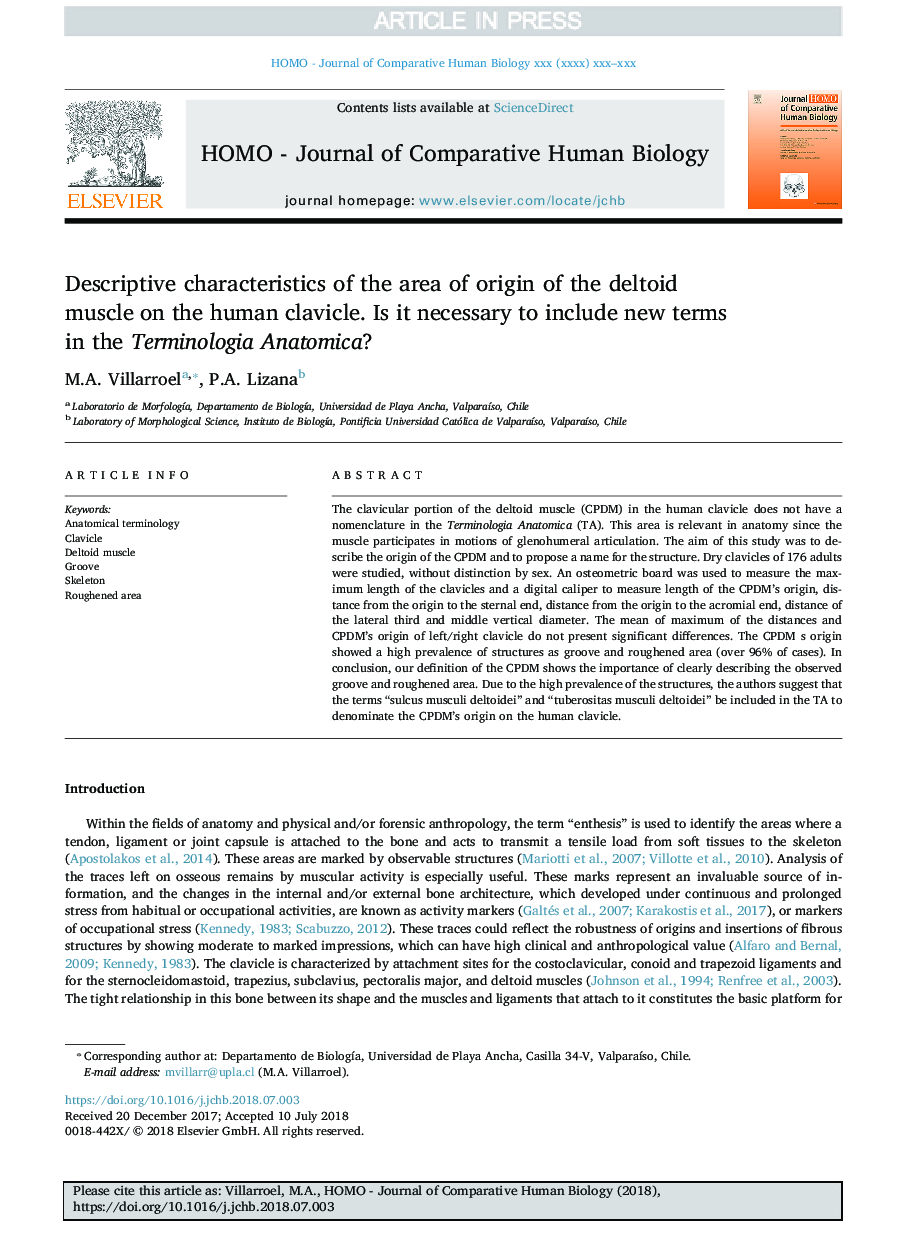| Article ID | Journal | Published Year | Pages | File Type |
|---|---|---|---|---|
| 8959789 | HOMO - Journal of Comparative Human Biology | 2018 | 5 Pages |
Abstract
The clavicular portion of the deltoid muscle (CPDM) in the human clavicle does not have a nomenclature in the Terminologia Anatomica (TA). This area is relevant in anatomy since the muscle participates in motions of glenohumeral articulation. The aim of this study was to describe the origin of the CPDM and to propose a name for the structure. Dry clavicles of 176 adults were studied, without distinction by sex. An osteometric board was used to measure the maximum length of the clavicles and a digital caliper to measure length of the CPDM's origin, distance from the origin to the sternal end, distance from the origin to the acromial end, distance of the lateral third and middle vertical diameter. The mean of maximum of the distances and CPDM's origin of left/right clavicle do not present significant differences. The CPDM s origin showed a high prevalence of structures as groove and roughened area (over 96% of cases). In conclusion, our definition of the CPDM shows the importance of clearly describing the observed groove and roughened area. Due to the high prevalence of the structures, the authors suggest that the terms “sulcus musculi deltoidei” and “tuberositas musculi deltoidei” be included in the TA to denominate the CPDM's origin on the human clavicle.
Related Topics
Life Sciences
Agricultural and Biological Sciences
Ecology, Evolution, Behavior and Systematics
Authors
M.A. Villarroel, P.A. Lizana,
